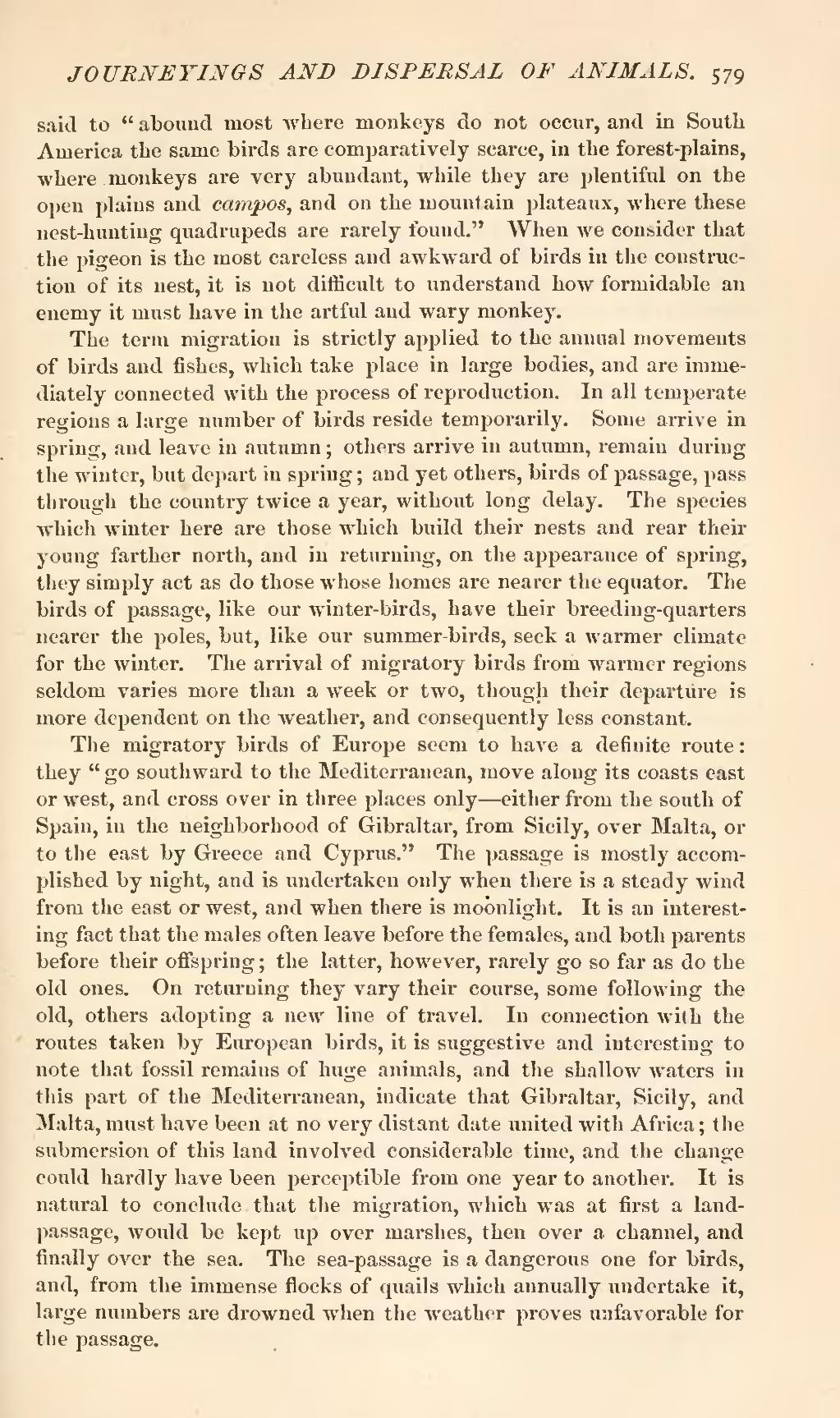said to "abound most where monkeys do not occur, and in South America the same birds are comparatively scarce, in the forest-plains, where monkeys are very abundant, while they are plentiful on the open plains and campos, and on the mountain plateaux, where these nest-hunting quadrupeds are rarely found." When we consider that the pigeon is the most careless and awkward of birds in the construction of its nest, it is not difficult to understand how formidable an enemy it must have in the artful and wary monkey.
The term migration is strictly applied to the annual movements of birds and fishes, which take place in large bodies, and are immediately connected with the process of reproduction. In all temperate regions a large number of birds reside temporarily. Some arrive in spring, and leave in autumn; others arrive in autumn, remain during the winter, but depart in spring; and yet others, birds of passage, pass through the country twice a year, without long delay. The species which winter here are those which build their nests and rear their young farther north, and in returning, on the appearance of spring, they simply act as do those whose homes are nearer the equator. The birds of passage, like our winter-birds, have their breeding-quarters nearer the poles, but, like our summer-birds, seek a warmer climate for the winter. The arrival of migratory birds from warmer regions seldom varies more than a week or two, though their departure is more dependent on the weather, and consequently less constant.
The migratory birds of Europe seem to have a definite route: they "go southward to the Mediterranean, move along its coasts east or west, and cross over in three places only—either from the south of Spain, in the neighborhood of Gibraltar, from Sicily, over Malta, or to the east by Greece and Cyprus." The passage is mostly accomplished by night, and is undertaken only when there is a steady wind from the east or west, and when there is moonlight. It is an interesting fact that the males often leave before the females, and both parents before their offspring; the latter, however, rarely go so far as do the old ones. On returning they vary their course, some following the old, others adopting a new line of travel. In connection with the routes taken by European birds, it is suggestive and interesting to note that fossil remains of huge animals, and the shallow waters in this part of the Mediterranean, indicate that Gibraltar, Sicily, and Malta, must have been at no very distant date united with Africa; the submersion of this land involved considerable time, and the change could hardly have been perceptible from one year to another. It is natural to conclude that the migration, which was at first a land passage, would be kept up over marshes, then over a channel, and finally over the sea. The sea-passage is a dangerous one for birds, and, from the immense flocks of quails which annually undertake it, large numbers are drowned when the weather proves unfavorable for the passage.
